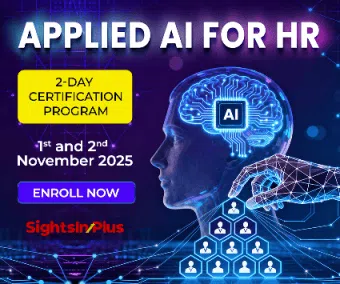Across organisations, recruitment professionals spend many anxious and tiring days (and nights) scouting for talent to be hired, often within stringent timelines and constrained budgets set by the all-important finance function. In spite of the same, many organisations in India continue to face unreasonably high attrition figures – no doubt, disappointed and dissatisfied employees leaving the organisation. And, so the cycle continues, day after day.
“As per research by Acengage, a leading company operating in the new hire onboarding space, in the services industry, upto 20% of employees leave during the first 90 days, majorly due to a poor or inadequate onboarding experience”
For every HR professional, this should be unacceptable. Especially, due to the huge advantage, we now have thanks to the development in the technological frameworks available for us at our disposal.
So, what are some of the onboarding interventions companies are doing backed by technology and how are they enhancing the entire interaction? Here’s a sample list for quick reference.
1. Onboarding Documentation
As any candidate will agree, the filling up of endless forms (whether paper or digital) is the real bane of the job hunt or job change process. End-to-end recruitment platforms enable seamless moving of candidate data from the time of application to employee joining. This paperless onboarding is more amicable for both the candidates and the recruitment (or HR) team members, leading to higher experience scores for both groups. Studies by Acengage show improvement in these metrics by upto 70%.
2. Employer Branding
What was once the domain of the ‘Central Marketing Team’ is now co-owned by the HR or TA team. Developing a strong value proposition for prospective hires, ensuring a high Offer to Join ratio and reducing early attrition are now cemented goals for the HR function. Digital onboarding enables companies to ‘push’ high quality curated content to offered candidates. This creates a holistic and favourable image of the organisation and enhances the attractiveness of the organistation.
3. Familiarisation
A critical component of every onboarding program is providing information on the company’s history, policies and so on. Traditionally, this has been done by gathering the employees into a room on their joining day and flooding their excited minds with slides upon slides of generic information. Needless to say, it easily becomes a mundane and mind-numbing activity. Digital platforms today allow you to tailor-make this information (depending upon role/ level/ etc.) and provide the same in a one-to-one mode to the new recruits.
4. Leadership Connects
In the pre-digital era, one of the biggest lacuna in the onboarding process was the leakage in the leadership connect sessions. These sessions are critical since the new hires get a very ‘real’ view of the environment they have joined since presenting leaders are able to share the latest developments and data regarding the organisation that corporate decks just can’t match up to. Leaders would be travelling or urgent critical meetings would take precedence over the onboarding session slotted on their calendar. Virtual meetups enables by the fast and global networks have mitigated this challenge to some extent and cancellations have reduced drastically.
5. Gamification
Companies are taking the information dissemination aspect a step further now using Gamification to engage the new recruits as they get an insight into the organisation. In a world that is now driven by social networks and communities, tech-based onboarding enables companies to replicate the community approach of these networks and foster collaboration and completion amongst the new hires. Often, this is done during the gap period between ‘offer’ and joining, keeping the candidates connected to each other and the company.
From the perspective of a new hire, a digital backed onboarding process helps make his or her transition into a new environment more seamless and reduces the anxiety that is often associated with the same. This happens because transactional and repetitive activities are eliminated or reduced, the pace of the communication is more measured and personalised and information flow is transparent and available across channels.
If looked at from the organisation’s viewpoint, a digital onboarding ensures that messaging is standardised, data flow and management is more robust and accurate, and there are cost and time savings. Studies have showcased that potential onboarding cost savings can be as high as 60% in a medium-size organisation. On top of this, functional leaders have a real-time view of important data points like pre-joining document submission, onboarding module completion, etc. which give an indicative view of the final offer conversion expected and resultant joining. These insights can help leaders plan back up candidate selection in the case, an adverse situation is expected.
A digital onboarding program also plays a transformational role in the careers of those from the HR or recruitment function who are directly involved in the same. As the clerical aspects of the job are reduced due to the infusion of technology, these resources have more bandwidth and can be utilized for more value additive tasks that aim at improving the new hires experience, such as handling concerns or assisting in tailor-making the onboarding.
It must also be borne in mind that the average cost of replacing an employee varies anywhere between 16% to 20% of the employee’s salary. Therefore, the benefits of creating a digitally enabled onboarding process are immense, for all the three parties involved – the organisation, the recruitment (or HR) team and most importantly, the new hires. It is, therefore, not if, but, when you are commencing this journey in your organisation, if you have not already done so!



